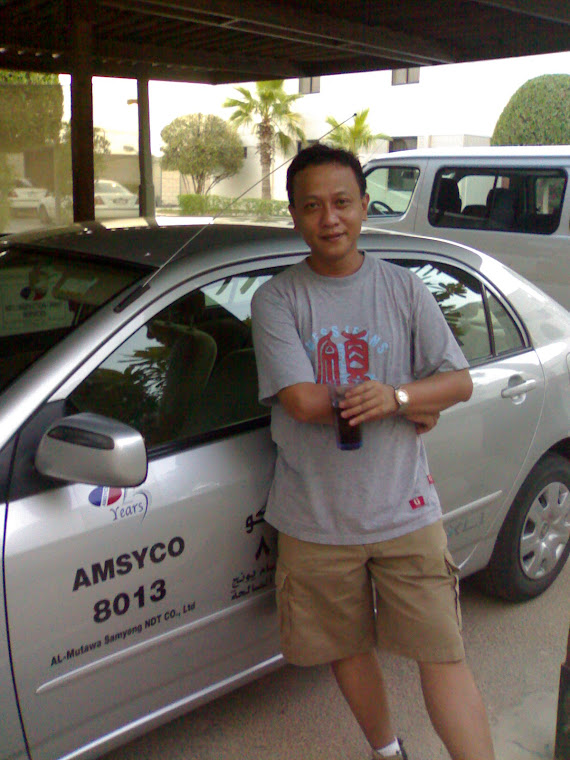This article will look at three views of the nature of man held by the early Christian church and how those views developed into what we accept today in the modern church. The three views are:
1. Augustinian - man is spiritually dead;
2. Pelagianism - man is spiritually well at birth and chooses his own destiny; and
3. semi-Pelagianism - man is spiritually sick and only needs the help of a higher power to assist him in his recovery.
The heart of the debate between Augustine and Pelagius centered on the doctrine of original sin, particularly with respect to the question of the extent to which the will of fallen man is "free." The controversy began when the British monk, Pelagius, opposed at Rome Augustine's famous prayer: "Grant what Thou commandest, and command what Thou dost desire." Pelagius recoiled in horror at the idea that a divine gift (grace) is necessary to perform what God commands. For Pelagius and his followers responsibility always implies ability. If man has the moral responsibility to obey the law of God, he must also have the moral ability to do it.
Classical Views of Man
Classical views about man can be gleaned form the writings of philosophers and theologians of the early times. During that period, the prevailing conception of man ws that he is the central figure in the natural order , not because of his qualities but because of God’s concern for him .
Rationalistic or Intellectualistic View of man by Early Philosophers notably Plato and Aristotle.
Man is animal who knows , feels , acts and make new things .
Modern Views of Man
The modern conception of man is that of being who has achieved and enjoys his present position of power and authority , not because the Divine Being endowed or allowed such a position to him but because it is made possible by his natural capacities. He is a being whose distinctive mark is his capacity to make free choices. According to Rousseau , it is this man’s capacity of choosing that determines the kind of person he will become.
Man ; A Relational Being
Man is a relational being in that he is related not only to other human beings but also to other living things , to nonliving ones , events and to a Supreme Being .
As a living being , man has to be concerned about his food , health and shelter so as to grow and continue living .
As a social being , man’s ;life is intimately interwoven with that of his fellowmen . Man is also related to the past and to history. Finally , man is related to a Transcendent Supreme Being whom some world religions , particularly Christianity and Judaism , call a “ personal creator God “.
Views on The Nature of Man
1. Man’s nature is essentially evil .
2. Man’s nature is good.
3. Man’s nature is neutral .
Questions ;
1. What is the importance of the study of the nature of man ?
2. Which of the views about man’s nature is true ?Support your choice.
3. Why is man regarded as a relational being ?
4. Is man born good or evil ? Support your position.
5. Whatever the nature of man is , can it be changed ? Explain your answer .
Tuesday, May 25, 2010
maslow's hierarchy of needs
Drive theory
The terms drive theory and drive reduction theory refer to a diverse set of motivational theories in psychology. Drive theory is based on the principle that organisms are born with certain physiological needs and that a negative state of tension is created when these needs are not satisfied. When a need is satisfied, drive is reduced and the organism returns to a state of homeostasis and relaxation. According to the theory, drive tends to increase over time and operates on a feedback control system, much like a thermostat.
Psychoanalysis
In Freudian psychoanalysis, drive theory refers to the theory of drives, motivations, or instincts, that have clear objects. Examples include what Freud called Eros, and what is now widely known as Thanatos, the drives toward Life and Death, respectively.
Freud's Civilization and Its Discontents was published in Germany in 1930 when the rise of fascism in that country was well under way, and the warnings of a second European war were leading to opposing calls for rearmament and pacifism. Against this background, Freud wrote "In face of the destructive forces unleashed, now it may be expected that the other of the two 'heavenly forces,' eternal Eros, will put forth his strength so as to maintain himself alongside of his equally immortal adversary."[1].
Maslow's hierarchy of needs
An interpretation of Maslow's hierarchy of needs, represented as a pyramid with the more basic needs at the bottom.[1]
Maslow's hierarchy of needs is a theory in psychology, proposed by Abraham Maslow in his 1943 paper A Theory of Human Motivation.[2] Maslow subsequently extended the idea to include his observations of humans' innate curiosity.
Maslow studied what he called exemplary people such as Albert Einstein, Jane Addams, Eleanor Roosevelt, and Frederick Douglass rather than mentally ill or neurotic people, writing that "the study of crippled, stunted, immature, and unhealthy specimens can yield only a cripple psychology and a cripple philosophy."[3] Maslow also studied the healthiest 1% of the college student population.[citation needed]
Representations
Maslow's hierarchy of needs is often portrayed in the shape of a pyramid, with the largest and lowest levels of needs at the bottom, and the need for self-actualization at the top, also the needs for people.[1][5]
The lower four layers of the pyramid contain what Maslow called "deficiency needs" or "d-needs": physiological (including sexuality), security of position, friendship and love, and esteem. With the exception of the lowest (physiological) needs, if these "deficiency needs" are not met, the body gives no physical indication but the individual feels anxious and tense.
Physiological needs
For the most part, physiological needs are obvious—they are the literal requirements for human survival. If these requirements are not met (with the exception of clothing, shelter, and sexual activity), the human body simply cannot continue to function.
Physiological needs include:
• Breathing
• Food
• Homeostasis
Air, water, and food are metabolic requirements for survival in all animals, including humans. Clothing and shelter provide necessary protection from the elements. The intensity of the human sexual instinct is shaped more by sexual competition than maintaining a birth rate adequate to survival of the species.
Safety needs
With their physical needs relatively satisfied, the individual's safety needs take precedence and dominate behavior. These needs have to do with people's yearning for a predictable, orderly world in which injustice and inconsistency are under control, the familiar frequent and the unfamiliar rare. In the world of work, these safety needs manifest themselves in such things as a preference for job security, grievance procedures for protecting the individual from unilateral authority, savings accounts, insurance policies, and the like.
For most of human history many individuals have found their safety needs unmet, but as of 2009 "First World" societies provide most with their satisfaction, although the poor must often still address these needs.
Safety and Security needs include:
• Personal security
• Financial security
• Health and well-being
• Safety net against accidents/illness and their adverse impacts
Love and Belonging
After physiological and safety needs are fulfilled, the third layer of human needs are social and involve feelings of belongingness. This aspect of Maslow's hierarchy involves emotionally based relationships in general, such as:
• Friendship
• Intimacy
• Family
Humans need to feel a sense of belonging and acceptance, whether it comes from a large social group, such as clubs, office culture, religious groups, professional organizations, sports teams, gangs ("Safety in numbers"), or small social connections (family members, intimate partners, mentors, close colleagues, confidants). They need to love and be loved (sexually and non-sexually) by others. In the absence of these elements, many people become susceptible to loneliness, social anxiety, and clinical depression. This need for belonging can often overcome the physiological and security needs, depending on the strength of the peer pressure; an anorexic, for example, may ignore the need to eat and the security of health for a feeling of control and belonging.
Esteem
All humans have a need to be respected and to have self-esteem and self-respect. Also known as the belonging need, esteem presents the normal human desire to be accepted and valued by others. People need to engage themselves to gain recognition and have an activity or activities that give the person a sense of contribution, to feel accepted and self-valued, be it in a profession or hobby. Imbalances at this level can result in low self-esteem or an inferiority complex. People with low self-esteem need respect from others. They may seek fame or glory, which again depends on others. Note, however, that many people with low self-esteem will not be able to improve their view of themselves simply by receiving fame, respect, and glory externally, but must first accept themselves internally. Psychological imbalances such as depression can also prevent one from obtaining self-esteem on both levels.
Most people have a need for a stable self-respect and self-esteem. Maslow noted two versions of esteem needs, a lower one and a higher one. The lower one is the need for the respect of others, the need for status, recognition, fame, prestige, and attention. The higher one is the need for self-respect, the need for strength, competence, mastery, self-confidence, independence and freedom. The latter one ranks higher because it rests more on inner competence won through experience. Deprivation of these needs can lead to an inferiority complex, weakness and helplessness.
Maslow stresses the dangers associated with self-esteem based on fame and outer recognition instead of inner competence.
Self-actualization
“What a man can be, he must be.”[6] This forms the basis of the perceived need for self-actualization. This level of need pertains to what a person's full potential is and realizing that potential. Maslow describes this desire as the desire to become more and more what one is, to become everything that one is capable of becoming.[7] This is a broad definition of the need for self-actualization, but when applied to individuals the need is specific. For example one individual may have the strong desire to become an ideal parent, in another it may be expressed athletically, and in another it may be expressed in painting, pictures, or inventions.[8] As mentioned before, in order to reach a clear understanding of this level of need one must first not only achieve the previous needs, physiological, safety, love, and esteem, but master these needs. Below are Maslow’s descriptions of a self-actualized person’s different needs and personality traits.
Maslow was a professor of Dr. Wayne Dyer. Dyer suggests that Maslow taught him two ways of understanding self-actualization: 1) to be free of the good opinion of others; 2) to do things not simply for the outcome but because it's the reason you are here on earth.[9]
Maslow also states that even though these are examples of how the quest for knowledge is separate from basic needs he warns that these “two hierarchies are interrelated rather than sharply separated” (Maslow 97). This means that this level of need as well as the next and highest level are not strict, separate, levels but closely related to others and this is possibly the reason that these two levels of need are left out of most textbooks.
Comparisons with Taoism and with Zen Buddhism
There are similarities between Maslow’s hierarchy of needs and the final stages of Taoism and Zen Buddhism. The similarities deal directly with the higher needs, starting with the self-actualization need. Maslow regards self-actualizing people as largely free from the power of society’s rules and making decisions based upon their beliefs not the accepted norms of society. In Taoism and Buddhism people free themselves of worldly possessions, thus freeing themselves from societal pressures and power. The self-actualized person most likely[original research?] will not have the same freedom from society as the Zen Buddhist or Taoist, but all three beliefs find their “perfect” being as one who is independent and makes decisions based upon nature and not the external authority of society or man.[10]
Marketing
Courses in marketing teach Maslow's hierarchy as one of the first theories as a basis for understanding consumers' motives for action. Marketers have historically looked towards consumers' needs to define their actions in the market. If producers design products meeting consumer needs, consumers will more often choose those products over those of competitors. Whichever product better fills the void created by the need will be chosen more frequently, thus increasing sales. This makes the model relevant to transpersonal business studies.
Criticisms
In their extensive review of research based on Maslow's theory, Wahba and Bridgewell found little evidence for the ranking of needs Maslow described, or even for the existence of a definite hierarchy at all.[11] Chilean economist and philosopher Manfred Max-Neef has also argued fundamental human needs are non-hierarchical, and are ontologically universal and invariant in nature—part of the condition of being human; poverty, he argues, may result from any one of these needs being frustrated, denied or unfulfilled.[citation needed]
The order in which the hierarchy is arranged (with self-actualisation as the highest order need) has been criticised as being ethnocentric by Geert Hofstede.[12][clarification needed]
He was also heavily criticized for hi
The terms drive theory and drive reduction theory refer to a diverse set of motivational theories in psychology. Drive theory is based on the principle that organisms are born with certain physiological needs and that a negative state of tension is created when these needs are not satisfied. When a need is satisfied, drive is reduced and the organism returns to a state of homeostasis and relaxation. According to the theory, drive tends to increase over time and operates on a feedback control system, much like a thermostat.
Psychoanalysis
In Freudian psychoanalysis, drive theory refers to the theory of drives, motivations, or instincts, that have clear objects. Examples include what Freud called Eros, and what is now widely known as Thanatos, the drives toward Life and Death, respectively.
Freud's Civilization and Its Discontents was published in Germany in 1930 when the rise of fascism in that country was well under way, and the warnings of a second European war were leading to opposing calls for rearmament and pacifism. Against this background, Freud wrote "In face of the destructive forces unleashed, now it may be expected that the other of the two 'heavenly forces,' eternal Eros, will put forth his strength so as to maintain himself alongside of his equally immortal adversary."[1].
Maslow's hierarchy of needs
An interpretation of Maslow's hierarchy of needs, represented as a pyramid with the more basic needs at the bottom.[1]
Maslow's hierarchy of needs is a theory in psychology, proposed by Abraham Maslow in his 1943 paper A Theory of Human Motivation.[2] Maslow subsequently extended the idea to include his observations of humans' innate curiosity.
Maslow studied what he called exemplary people such as Albert Einstein, Jane Addams, Eleanor Roosevelt, and Frederick Douglass rather than mentally ill or neurotic people, writing that "the study of crippled, stunted, immature, and unhealthy specimens can yield only a cripple psychology and a cripple philosophy."[3] Maslow also studied the healthiest 1% of the college student population.[citation needed]
Representations
Maslow's hierarchy of needs is often portrayed in the shape of a pyramid, with the largest and lowest levels of needs at the bottom, and the need for self-actualization at the top, also the needs for people.[1][5]
The lower four layers of the pyramid contain what Maslow called "deficiency needs" or "d-needs": physiological (including sexuality), security of position, friendship and love, and esteem. With the exception of the lowest (physiological) needs, if these "deficiency needs" are not met, the body gives no physical indication but the individual feels anxious and tense.
Physiological needs
For the most part, physiological needs are obvious—they are the literal requirements for human survival. If these requirements are not met (with the exception of clothing, shelter, and sexual activity), the human body simply cannot continue to function.
Physiological needs include:
• Breathing
• Food
• Homeostasis
Air, water, and food are metabolic requirements for survival in all animals, including humans. Clothing and shelter provide necessary protection from the elements. The intensity of the human sexual instinct is shaped more by sexual competition than maintaining a birth rate adequate to survival of the species.
Safety needs
With their physical needs relatively satisfied, the individual's safety needs take precedence and dominate behavior. These needs have to do with people's yearning for a predictable, orderly world in which injustice and inconsistency are under control, the familiar frequent and the unfamiliar rare. In the world of work, these safety needs manifest themselves in such things as a preference for job security, grievance procedures for protecting the individual from unilateral authority, savings accounts, insurance policies, and the like.
For most of human history many individuals have found their safety needs unmet, but as of 2009 "First World" societies provide most with their satisfaction, although the poor must often still address these needs.
Safety and Security needs include:
• Personal security
• Financial security
• Health and well-being
• Safety net against accidents/illness and their adverse impacts
Love and Belonging
After physiological and safety needs are fulfilled, the third layer of human needs are social and involve feelings of belongingness. This aspect of Maslow's hierarchy involves emotionally based relationships in general, such as:
• Friendship
• Intimacy
• Family
Humans need to feel a sense of belonging and acceptance, whether it comes from a large social group, such as clubs, office culture, religious groups, professional organizations, sports teams, gangs ("Safety in numbers"), or small social connections (family members, intimate partners, mentors, close colleagues, confidants). They need to love and be loved (sexually and non-sexually) by others. In the absence of these elements, many people become susceptible to loneliness, social anxiety, and clinical depression. This need for belonging can often overcome the physiological and security needs, depending on the strength of the peer pressure; an anorexic, for example, may ignore the need to eat and the security of health for a feeling of control and belonging.
Esteem
All humans have a need to be respected and to have self-esteem and self-respect. Also known as the belonging need, esteem presents the normal human desire to be accepted and valued by others. People need to engage themselves to gain recognition and have an activity or activities that give the person a sense of contribution, to feel accepted and self-valued, be it in a profession or hobby. Imbalances at this level can result in low self-esteem or an inferiority complex. People with low self-esteem need respect from others. They may seek fame or glory, which again depends on others. Note, however, that many people with low self-esteem will not be able to improve their view of themselves simply by receiving fame, respect, and glory externally, but must first accept themselves internally. Psychological imbalances such as depression can also prevent one from obtaining self-esteem on both levels.
Most people have a need for a stable self-respect and self-esteem. Maslow noted two versions of esteem needs, a lower one and a higher one. The lower one is the need for the respect of others, the need for status, recognition, fame, prestige, and attention. The higher one is the need for self-respect, the need for strength, competence, mastery, self-confidence, independence and freedom. The latter one ranks higher because it rests more on inner competence won through experience. Deprivation of these needs can lead to an inferiority complex, weakness and helplessness.
Maslow stresses the dangers associated with self-esteem based on fame and outer recognition instead of inner competence.
Self-actualization
“What a man can be, he must be.”[6] This forms the basis of the perceived need for self-actualization. This level of need pertains to what a person's full potential is and realizing that potential. Maslow describes this desire as the desire to become more and more what one is, to become everything that one is capable of becoming.[7] This is a broad definition of the need for self-actualization, but when applied to individuals the need is specific. For example one individual may have the strong desire to become an ideal parent, in another it may be expressed athletically, and in another it may be expressed in painting, pictures, or inventions.[8] As mentioned before, in order to reach a clear understanding of this level of need one must first not only achieve the previous needs, physiological, safety, love, and esteem, but master these needs. Below are Maslow’s descriptions of a self-actualized person’s different needs and personality traits.
Maslow was a professor of Dr. Wayne Dyer. Dyer suggests that Maslow taught him two ways of understanding self-actualization: 1) to be free of the good opinion of others; 2) to do things not simply for the outcome but because it's the reason you are here on earth.[9]
Maslow also states that even though these are examples of how the quest for knowledge is separate from basic needs he warns that these “two hierarchies are interrelated rather than sharply separated” (Maslow 97). This means that this level of need as well as the next and highest level are not strict, separate, levels but closely related to others and this is possibly the reason that these two levels of need are left out of most textbooks.
Comparisons with Taoism and with Zen Buddhism
There are similarities between Maslow’s hierarchy of needs and the final stages of Taoism and Zen Buddhism. The similarities deal directly with the higher needs, starting with the self-actualization need. Maslow regards self-actualizing people as largely free from the power of society’s rules and making decisions based upon their beliefs not the accepted norms of society. In Taoism and Buddhism people free themselves of worldly possessions, thus freeing themselves from societal pressures and power. The self-actualized person most likely[original research?] will not have the same freedom from society as the Zen Buddhist or Taoist, but all three beliefs find their “perfect” being as one who is independent and makes decisions based upon nature and not the external authority of society or man.[10]
Marketing
Courses in marketing teach Maslow's hierarchy as one of the first theories as a basis for understanding consumers' motives for action. Marketers have historically looked towards consumers' needs to define their actions in the market. If producers design products meeting consumer needs, consumers will more often choose those products over those of competitors. Whichever product better fills the void created by the need will be chosen more frequently, thus increasing sales. This makes the model relevant to transpersonal business studies.
Criticisms
In their extensive review of research based on Maslow's theory, Wahba and Bridgewell found little evidence for the ranking of needs Maslow described, or even for the existence of a definite hierarchy at all.[11] Chilean economist and philosopher Manfred Max-Neef has also argued fundamental human needs are non-hierarchical, and are ontologically universal and invariant in nature—part of the condition of being human; poverty, he argues, may result from any one of these needs being frustrated, denied or unfulfilled.[citation needed]
The order in which the hierarchy is arranged (with self-actualisation as the highest order need) has been criticised as being ethnocentric by Geert Hofstede.[12][clarification needed]
He was also heavily criticized for hi
Subscribe to:
Posts (Atom)









.jpg)






